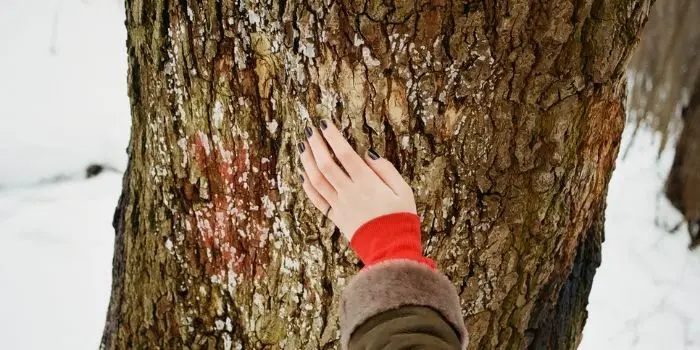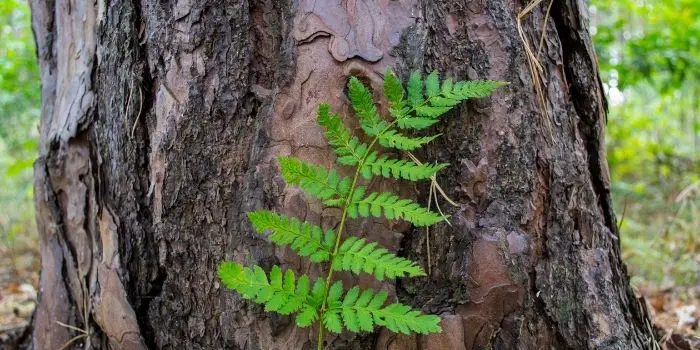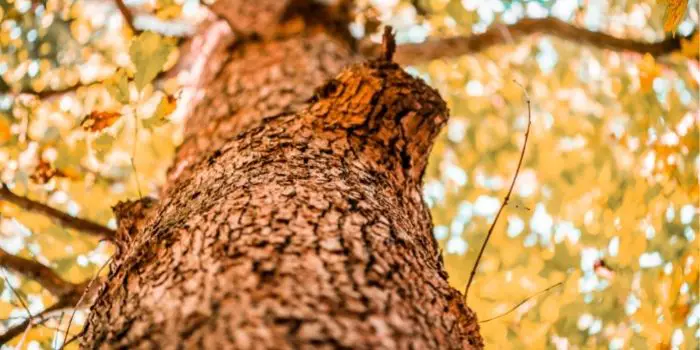
If you are near a living tree, chances are it will have bark.
Next to the leaves themselves, tree bark is one of the most common natural items found in the forest.
So, what happens if you are alone in the woods and need food? The answer might be found in the very bark that is on the trees.
Just like mushrooms, there is the bark from trees that is edible. These include Birch, Balsam Fir, Pines, Slippery Elm, Spruce, and Tamarack.
The fact of the matter is most of these tree bark is not only edible but an excellent source of calories. Something that you may need to help you survive until help arrives.
However, you want to avoid consuming the bark from the following types of trees.
- Cherry
- Eucalyptus
- Pacific Yew
Below, I will be talking more about these trees, their bark, how they taste, and how you can actually process and eat them for survival. So, let’s dive in straight…
Tree Bark Nutritional Facts
Per pound, tree bark has about 550 calories which makes it nutritionally dense for something that can be easily foraged.
It’s also quite plentiful and easy to obtain, especially if you have a knife to cut the bark away from the tree.
The edible part of the tree bark is known as cambium. It contains plenty of starches and sugars for energy, along with vitamins and minerals that support your body’s functions.
Perhaps the most noticeable aspect of cambium is the fiber which will help keep it moving through your digestive system.

What Trees Have Edible Bark?
Of the many types of trees that have edible bark, there are three that stand out for their nutritional value, source of energy, and fiber.
1- Birch
This tree is mostly found in temperate climates and is part of the deciduous family. It is recognizable by its thin leaves and papery-like bark.
The bark from a birch tree (Black Birch, Yellow Birch) tends to be sweeter and more flavorful compared to most other trees.
Sweeter than most other tree bark and with a hint of wintergreen, this may be the most pleasing tasting of all tree bark.
You can even turn the bark into flour and use it for your baking. It will add not only a pleasing taste but also good nutrition to cookies and bread.
2- Pine
This is a tree that is evergreen and coniferous. It is also one of the most commonly harvested of all trees for consumption.
Deer like to eat the top parts of the pine tree as it is a source of nutrition. You can easily spot a pine tree thanks to its pine needles and cones.
When raw, pine bark is quite bland and chewy. But when cooked, it helps bring out a more pleasing flavor, although it is still rather bland. It is best to consume only the innermost part of the cambium.
But overall, do not expect to fall in love with the taste of pine bark. But it does pack enough calories and nutrition to keep you going in survival situations.
3- Slippery Elm
This is a version of the elm tree noted for its “slippery” bark on the inside. Commonly found in North America, this tree is also called a red, gray, or soft elm.
In addition to being consumable, the inner bark has been used in medicines to treat conditions that range from sore throats to hemorrhoids.
The bark from this tree has an earthy, nutty flavor that is quite pleasing when prepared properly.
It is often used in teas and poultices and can be found in pill or powder form. You can even make a thin gruel if you are more interested in its medicinal effects.

What Tree Barks You Cannot Eat?
As important as it is to find tree bark that you can consume, you should also know what to avoid.
What follows are three trees that you should not eat the bark of.
1- Eucalyptus
This is a common tree from which eucalyptus oil is found.
There are over 700 species of eucalyptus trees found around the world. It is the oil from this type of tree that can cause illness if consumed.
The eucalyptus is recognizable from its red to rainbow-colored bark, some of which may easily peel from the tree. But you can identify this type of tree from its unmistakable fragrance.
2- Pacific Yew
The bark of Pacific Yew is toxic to both humans and animals as it contains an alkaloid toxin.
Ingesting the bark may even cause heart issues that can be quite detrimental. So, you should avoid consuming this bark at any cost.
You can recognize the Pacific Yew thanks to its thin leaves and bark, seed cones, and red berries that grow in the branches.
3- Wild Cherry
Interestingly enough, only the berries from the wild cherry tree are not toxic. All other parts of the tree, including the bark, contain cyanogenic glycosides, which are poisonous to humans.
You can easily recognize this tree by its fruit and by the white flowers that grow on it as well.
How Do You Harvest and Eat Tree Bark?
The first step is to remove the outer and middle layers of the bark.
This part generally is less desirable to consume. You want the inner bark or the cambium layer.
This part of the bark tends to be a little rubbery and cream-colored, although some variations may be white. There are four basic ways to consume the bark.
- Raw
- Boiled
- Fried
- Making Flour
Eating it raw is the simplest method. Just peel it away and chew it in small bites. But it will be tough going, and you may wind up with a sore jaw from chewing on the fibers.
Boiling the bark makes it easier to consume. Combine with fresh water, boil for a few minutes, and make a soup. The boiling will break up the harder fibers so that it passes through your system easier.
Frying will require a frying pan and some oil or fat. Layer both sides with oil, put it on the frying pan, and cook it for a few minutes. It should have a consistency similar to a potato chip or jerky.
You’ll have to grind the bark thoroughly to turn it into flour. But it can make an excellent addition to bread and cookies.
Final Thoughts
In America and most other parts of the world, eating tree bark is pretty safe in the wild provided you know what kind of tree and what part of the bark you are exactly using as food.
The nutrition and taste of the bark will depend on the species. This means each of the trees mentioned above will have its own distinctive taste.
So, before you include it in your diet, make sure you check what your body requirements are and whether you like its taste or not.
Share the post "What Kind of Tree Bark Can You Eat – How it Tastes Like?"

Hi, I am Mark Garner a professional carpenter, woodworker, and DIY painter. I live in the small city of Peoria, Arizona as a semi-retired woodworker. I have started this blog with a simple motive to help you with my wood experience in this sector. If you like to know more about what I love doing and how it all got started, you can check more about me here.





